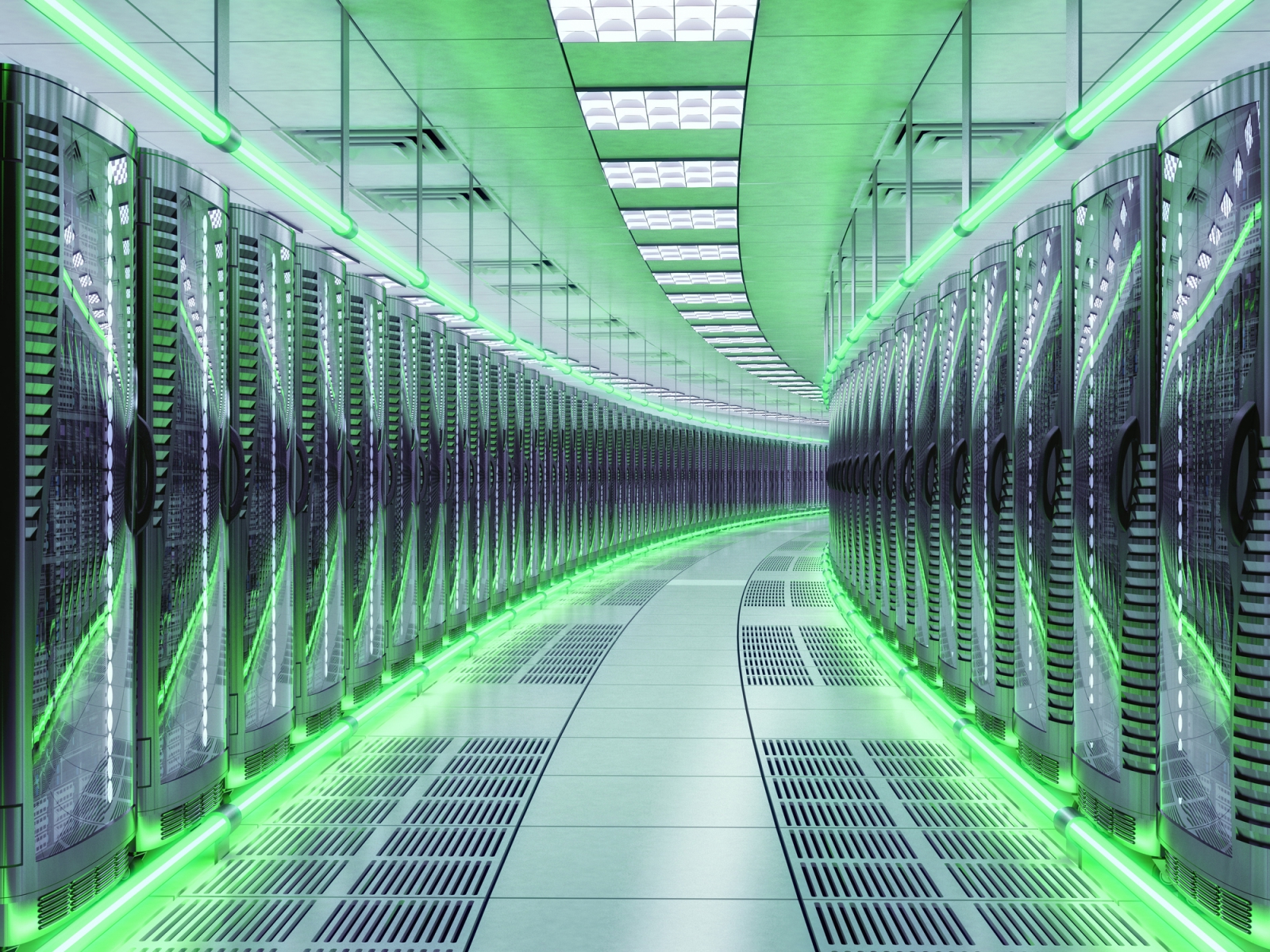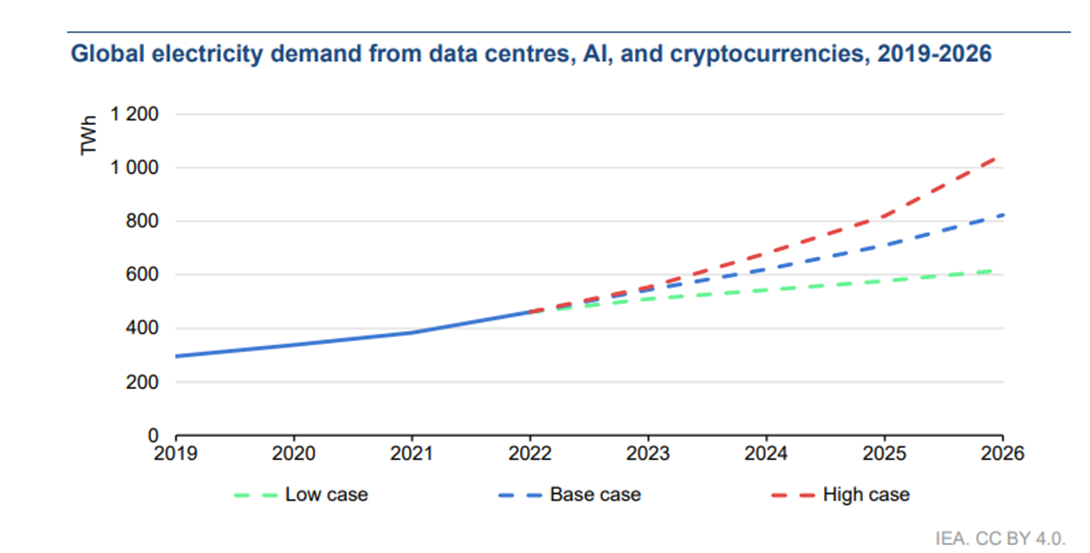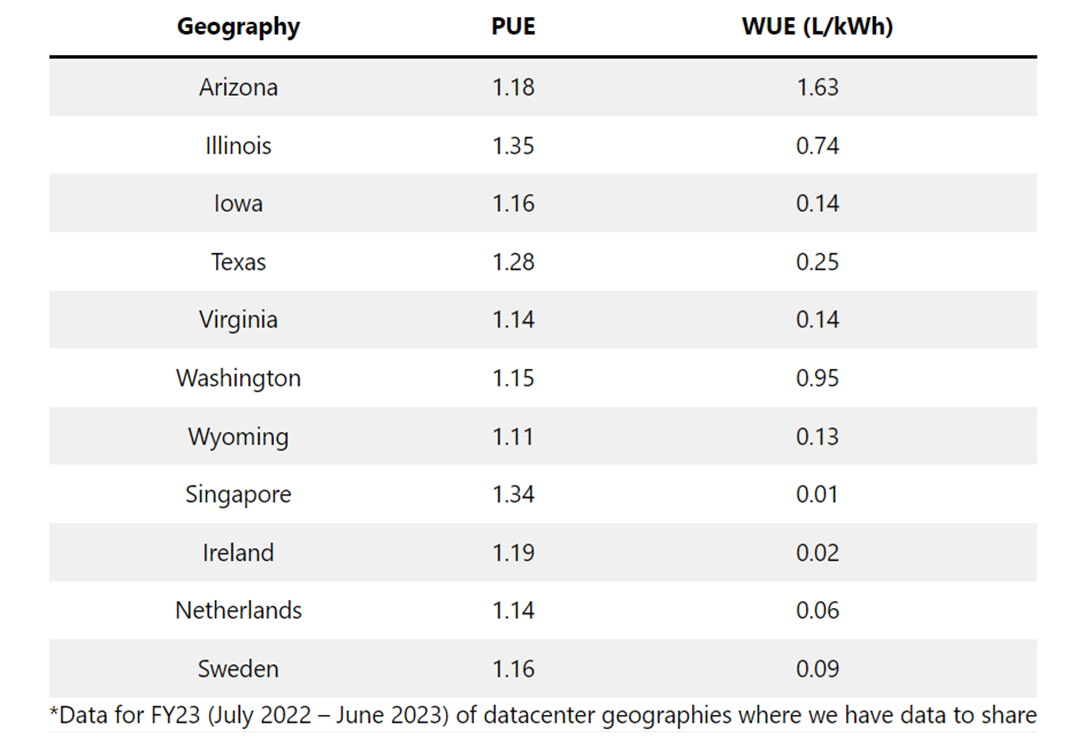
Green data centers that meet computing power demand with less environmental damage offer a solution. (Photo: iStock)
AI's escalating energy demands are spurring investments in "green data centers" by tech giants like Google and Microsoft, striving to balance the surge in computing power with environmental concerns. Southeast Asian countries like Singapore, Thailand, and Malaysia are positioning themselves as prime investment destinations while pursuing low-carbon solutions.
The International Energy Agency (IEA) predicts that global data center electricity use will reach 1,000 TWh by 2026, equivalent to Japan's annual electricity consumption, along with significant carbon emissions.

The International Energy Agency estimates that global data center electricity consumption will reach 1 GWh by 2026. (Photo: IEA)
What is green data center?
A green data center, also known as a sustainable data center, aims to reduce its environmental footprint through various means. Common methods include choosing locations near renewable energy sources, recycling resources, improving efficiency, and obtaining certifications like Energy Star or LEED (Leadership in Energy and Environmental Design).
According to the Institute of Electrical and Electronics Engineers (IEEE), most energy in data centers is used for cooling, lighting, data storage, computing, hardware integration, and power transmission.
One common measure of a data center's sustainability is the Power Usage Effectiveness (PUE), introduced by The Green Grid (TGG) in 2007, which is widely recognized in the industry and by governments as a key indicator of energy efficiency.
Other metrics include Water Usage Effectiveness (WUE), Carbon Usage Effectiveness (CUE), and Infrastructure Utilization Efficiency (IUE).
PUE is calculated by dividing a data center’s total energy consumption by the energy used by its IT equipment. A lower PUE value indicates better energy efficiency.
For instance, Google's data centers in Taiwan have an average PUE of 1.1, with a best-case scenario of 1.06. Microsoft’s data centers have an average PUE of 1.2, similar to Alibaba Cloud’s data centers, while Amazon Web Services (AWS) has not disclosed its figure.

Microsoft's data center PUE and WUE for the 2023 fiscal year (Photo: Microsoft)
Google: Adopting liquid cooling, developing carbon removal solutions
Google established Southeast Asia's first data center in Singapore in 2013 and now operates four centers there as of June 2024, recognizing the country's extensive submarine cable network and business-friendly regulations, as well as one of the world's fastest-growing Internet economy.
Google has invested $5 billion in its Singapore data centers, a fivefold increase since 2018, including investments in green data centers.
Before Singapore introduced environmental requirements for data centers, Google had begun improvements. Its latest data center in the country recycles water used in cooling systems and maintains an indoor temperature at 27°C to save energy.
Additionally, Google has expanded its renewable energy purchase and shifted from using carbon credits to developing carbon removals, which involve directly removing CO2 from the atmosphere. Although more costly, this method is more effective in reducing carbon emissions.
Microsoft: Utilizing air cooling, advancing hydrogen fuel cells
Microsoft announced in 2020 its plans to build a data center in Taiwan, expected to be completed in 2024 with a target PUE of 1.2. The center will source renewable energy from solar, wind, and hydro power. When temperatures fall below 29.4°C, the new data centers will rely solely on ventilation and air cooling, reducing water consumption for cooling by 30% annually.
Globally, Microsoft operates over 300 data centers across 60 countries. Its renewable energy projects span 21 countries, with a total capacity of 19.8 GW.
Microsoft aims to achieve 100% zero-carbon energy use around the clock by 2030. In addition to air cooling and reusing rainwater, Microsoft is developing hydrogen fuel cells to replace backup generators in data centers.
Southeast Asia sees green data center boom amid regulatory advances
Demand for data centers in Southeast Asia is surging. In May 2024, Singapore launched its Green Data Centre Roadmap to address the energy challenges posed by the AI boom.
The roadmap aims to add 300 MW of new capacity in the short term by enhancing energy efficiency and deploying energy-saving equipment, potentially adding another 200 MW or more of green electricity.
The Infocomm Media Development Authority (IMDA), which is leading the plan, has also announced that it will introduce standards for IT equipment energy efficiency and liquid cooling by 2025.
Thailand also recognizes the trend towards green data centers. Prime Minister Srettha Thavisin instructed in June 2024 to expedite the development of the Direct Power Purchase Agreement (DPPA) for renewable energy to attract data center investments, with pilot projects underway.
Malaysia has secured financing for two green data centers, amounting to $530 million, driving a 326% increase in its green investments in 2023 compared to the previous year. This growth rate is the highest in Southeast Asia, highlighting the enormous green business opportunities in data centers.
According to a report jointly published by Bain & Company, Standard Chartered, Temasek Holdings, and its green investment company GenZero, $6.3 billion in green investments flowed into Southeast Asia in 2023, a 21% increase from the previous year.
Among them, data centers in Singapore and Malaysia are the largest contributors, driven by government energy efficiency regulations and the sustainability commitments of major international companies, with reports predicting that they will continue to thrive.
Source: Nikkei Asia, IEEE, Microsoft, CNBC, Bloomberg, Southeast Asia’s Green Economy 2024

